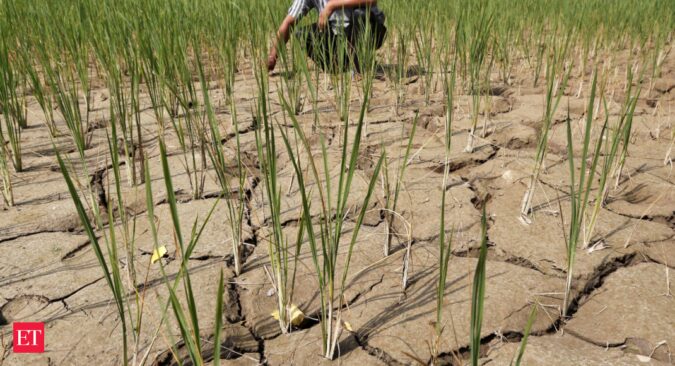The rating agency has argued that for the Indian economy’s growth prospects, El Nino could pose a significant threat as it can result in below-normal monsoon between June & September when more rain-dependent summer crops are grown.
“Our analysis suggests that below-normal rains are more likely to adversely impact growth, while the inflation impact is less certain, partly because India is a net food exporter,” wrote Aurodeep Nandi and Sonal Varma, Nomura.
The occurrence of El Nino can theoretically result in a stagflationary shock, a scenario where inflation is high and growth is low since it results in less rainfall and limits agricultural production.
Yet, empirical evidence suggests things haven’t been as severe in Asia, which paves the way for uncertainty among policymakers.
More than half of cultivated land in India is still rain-fed, underlining the relevance of the summer monsoon which accounts for 75% of natural precipitation in India.Highlighting its significance, former President Pranab Mukherjee once termed monsoon rains India’s ‘real finance minister’.A threat to inflation and growth
Reserve Bank of India (RBI) officials have not underplayed the threat that this uncertainty holds to India’s inflation forecast.
RBI governor Shaktikanta Das mentioned El Nino six times while announcing the latest MPC meeting’s outcome, and went on to talk about it more during the press briefing later on.
The RBI has assumed normal rains in its forecasts for a 5.1 per cent inflation and 6.5 per cent growth this year. Yet, monsoon-related uncertainties found prominent mention in their commentary.
Economists echo that sentiment. “Depending on the extent of the impact of El Nino on Kharif’s yield, the rise in retail inflation can be anything between 35 bps to 70 bps above the prevailing inflation rate,” said Debopam Chaudhuri, Chief Economist, Piramal Group.
Despite a normal monsoon, the uneven distribution can lead to crop failures.
For instance, sugar millers reportedly cut their production estimates in April partly due to the uneven spread of rains.
Traders informed Reuters that India’s wheat harvest in 2023 is at least 10% lower than the government’s estimate amid a sharp rise in local prices during the past two months.
Lower wheat production for a second straight year could complicate New Delhi’s efforts to keep a lid on prices of the staple and overall food inflation, a major concern amid forecasts of an El Nino weather pattern.
“Food inflation (around 40% of the basket) faces upside risks from these vulnerabilities, with cereals already facing the heat as the component punched above its weight last year, overshadowing the decline in the contribution of the more volatile vegetable segment,” Radhika Rao, Executive Director and Senior Economist, DBS Bank told ET Online.
Acting on the forecast of El Nino, the Indian government has taken certain steps such as imposing stock limits on tur, urad & wheat and implementing a cap on sugar exports until mid-2024. The government will also offload rice and wheat from its stocks to bulk buyers and traders under the OMS scheme.
Resultant buffer stocks can cushion some of the blow, Nomura argues.
